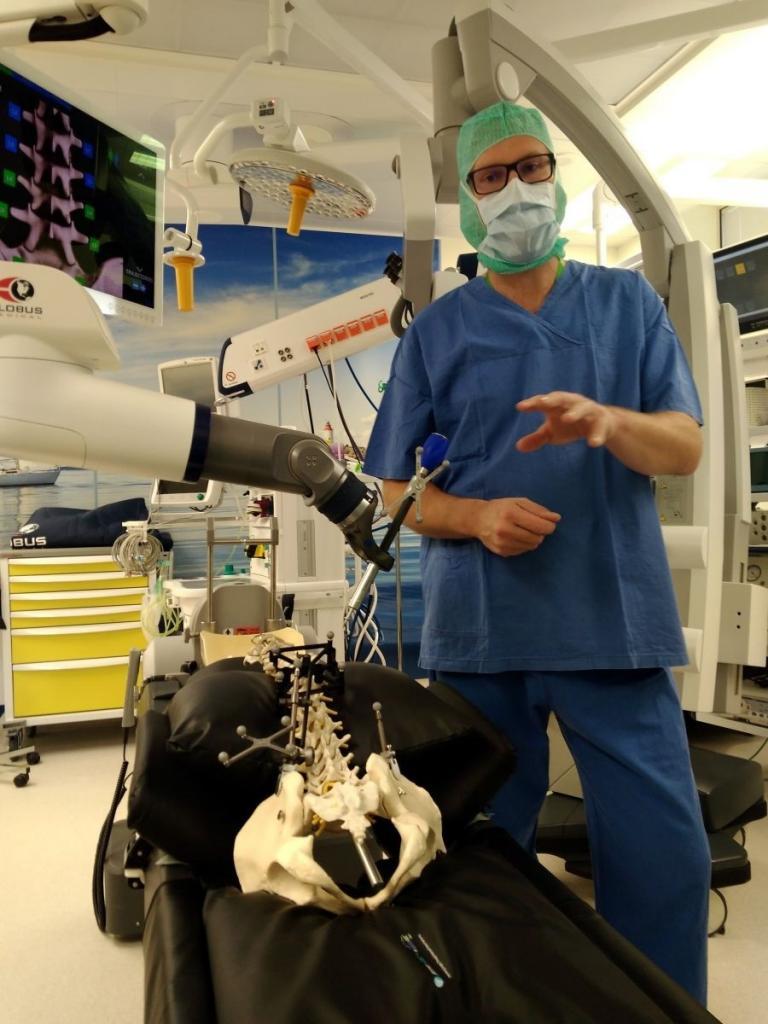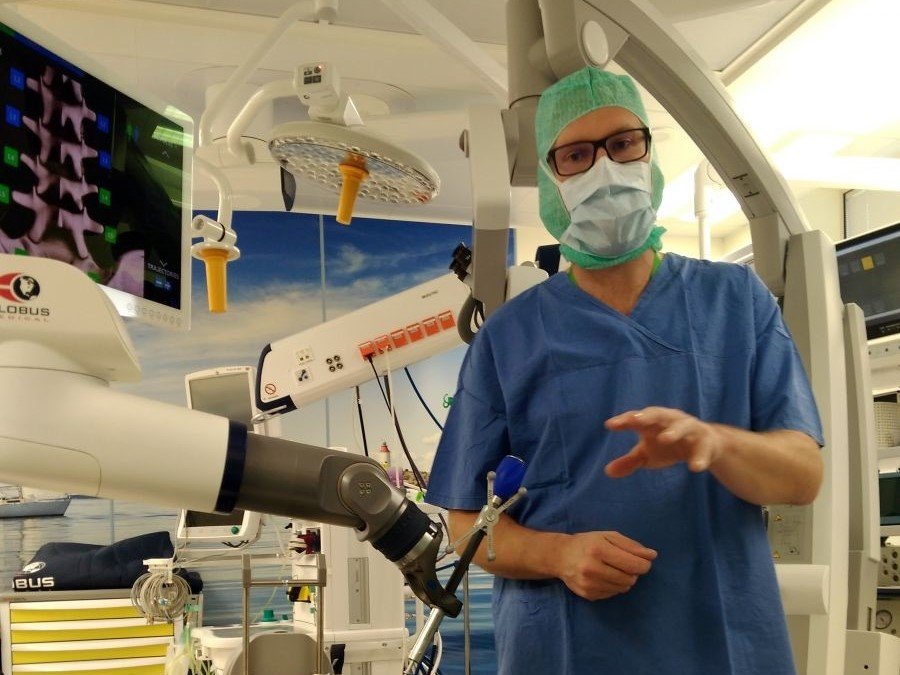The spine surgeons at the East Tallinn Central Hospital have started performing surgeries using a new robot that help them place implants and navigate the spine; the robot is the first of its kind in Northern Europe.
“We performed our first surgery with the robot the same day as India,” Dr Taavi Toomela, the head of the Centre of Spine Surgery at the East Tallinn Central Hospital, said in a statement. “There is no similar robot in Northern Europe or Russia. In fact, there are only five such machines in Europe. It will completely and permanently transform the way spine surgeries are performed.”
According to the doctor, the doctors at the spine surgery centre have already performed 12 robotic-assisted surgeries since September.
The robot, officially launched in the US at the end of last year, is called Excelsius GPS. It helps surgeons place implants and navigate the spine and, according to Toomela, is a huge step forward for spine surgery. “Improving implants in spine surgery is a small step, but the fact that surgeries can be done so quickly, so efficiently and with so little risk is a huge step forward.”
Less harm to the patient
“A model of the patient’s spine is displayed on the screen, allowing me to plan the surgery and screw placement,” he explained. “And then, with the help of the robot, implants are placed accurately in exact locations. The surgeon plans and fixes the screws, the robot assists.”

According to Toomela, all common back surgeries can be done in a minimally invasive manner with the help of the robot, which means much less harm to the patient. For the patient, this means shorter surgery time and faster recovery.
“It involves much less trauma for the patient. The robot makes minimally invasive surgeries much safer and more efficient. Similar surgeries were possible before, but surgeons had to take hundreds of X-ray images or be very experienced and know exactly how to operate through small incisions and deliver an implant to a precise location. Now the robot will assist you and show you the right location in the spine to place the implant.”
Helps operate on high-risk patients
“Before, we relied on multiple X-ray images to guide us along the patient’s spine. With the new imaging systems, patients are exposed to less radiation as well. Despite the lower radiation exposure, however, the image quality is still good enough. Now we can send this image to the robot, which, based on specific markers, can accurately determine the position of the spine and where the implant should be placed. The robot eliminates the need for multiple investigations. We just upload the images to a computer and rely on them.”
The new robot can also help patients who could not undergo surgery before. “We can operate on high-risk patients who require minimally invasive and fast surgery. For these patients, open surgery was previously not an option. Thanks to new opportunities and with the help of an experienced team of critical care doctors and anaesthesiologists, we are now able to do it.”

The hospital has been investing in the Centre of Spine Surgery for years and the centre has developed rapidly. “There is now so much necessary equipment that we are starting to run out of space. Modern operating rooms are much larger to accommodate all the modern and necessary equipment. We have come a long way and now need another operating room. In light of this, the creation of the Tallinn Hospital is absolutely vital.”
Cover: Spine surgeons at the East Tallinn Central Hospital present their new robot.

